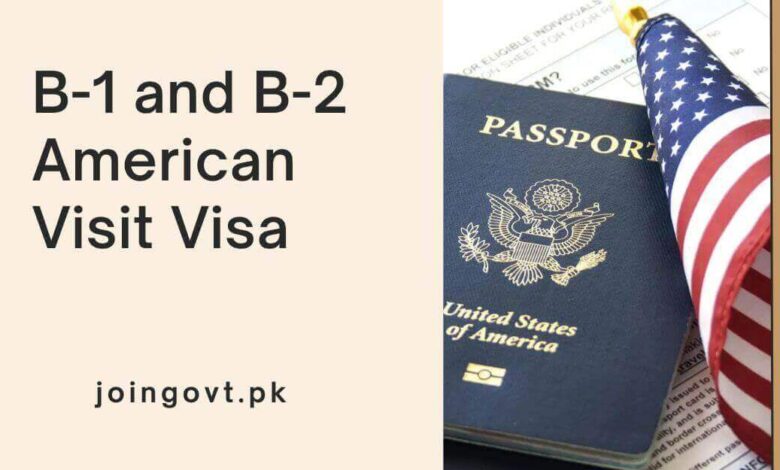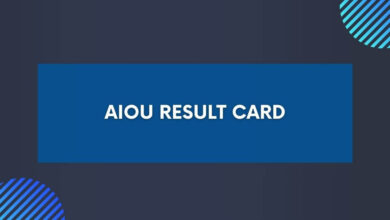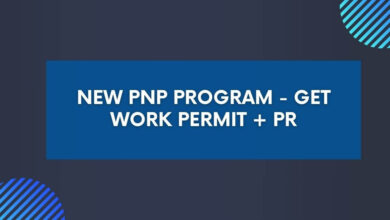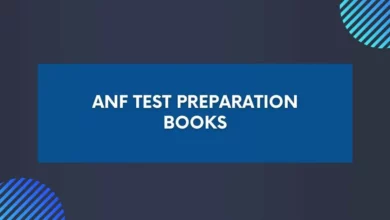B-1 and B-2 American Visit Visa 2025 – Apply Now

The United States introduced significant updates to its B-1/B-2 Visitor Visa program, enhancing both security and efficiency. These changes aim to make the application process more user-friendly for business and leisure travelers while ensuring that only qualified individuals are approved.
Whether you’re attending a trade event, visiting family, or exploring as a tourist, this guide covers everything you need to know.
Check Also: New PNP Program – Get Work Permit + PR
What Is the B-1/B-2 Visa?
The B-1/B-2 visa is a nonimmigrant visa that allows foreign nationals to enter the United States temporarily for either:
- B-1 (Business): Attending business meetings, conferences, or contract negotiations.
- B-2 (Tourism): Vacation, family visits, medical treatment, or participation in social events.
Key Updates:
1. Enhanced Security Measures
- Biometric Data Collection: Applicants are now required to submit updated digital fingerprints and photographs.
- Expanded Background Checks: U.S. authorities conduct deeper reviews of travel and criminal history to ensure eligibility.
2. Revised Documentation Requirements
- Proof of Ties to Home Country: You must demonstrate strong reasons to return home, such as a job, family obligations, or property ownership. Acceptable documents include employment letters, deeds, or dependent care responsibilities.
- Financial Stability: You may be asked to show detailed financial documents (bank statements, income proof) to confirm that you can fund your trip.
- Purpose of Visit: Clearly outline your reason for travel. Business visitors should include invitation letters or event registration. Tourists should provide itineraries or hotel bookings.
3. Digital Application Enhancements
- Updated DS-160 Form: The U.S. State Department redesigned the DS-160 form for improved usability and fewer input errors.
- Remote Interview Options: In some regions, eligible applicants may now participate in virtual interviews.
Application Process Of B-1 and B-2 American Visit Visa 2025:
Step 1: Complete the DS-160 Form
- Visit the U.S. Department of State’s Consular Electronic Application Center.
- Fill out the updated DS-160 form carefully. Ensure your information matches your passport and travel documents.
- Upload a compliant digital photo.
Step 2: Pay the Visa Application Fee
- Pay the required fee via your local embassy’s approved payment method.
- Save and print the receipt for your records.
Step 3: Schedule Your Interview
- Book your visa interview at the nearest U.S. embassy or consulate.
- Be prepared to discuss your travel plans, financial situation, and ties to your home country.
Step 4: Gather Supporting Documents
- Valid passport (valid for at least six months beyond your stay).
- Proof of ties to your home country (job letter, property deeds, family documents).
- Financial records (bank statements, tax returns, pay slips).
- Proof of visit purpose (invitation letters, hotel reservations, itinerary).
Step 5: Attend the Interview
- Bring all required documentation.
- Provide biometric data (fingerprints, photo) if required.
- Answer all questions honestly and clearly.
Step 6: Wait for Visa Decision
- Processing times vary by country and applicant history.
- You will receive a notification once your visa is approved or denied.
- If approved, your visa will be stamped in your passport or issued electronically.
Final Tips:
- Check Official Sources: Always verify requirements at travel.state.gov.
- Be Truthful: Misrepresentation can lead to permanent visa ineligibility.
- Prepare Thoroughly: Well-organized documents increase your chances of approval.
Frequently Asked Questions:
-
What’s new in the visa process?
Updates include biometric scanning, deeper background checks, digital form improvements, and optional video interviews.
-
How can I prove strong ties to my home country?
Submit documents like a job offer letter, proof of property, or evidence of family obligations.
-
What if I’m asked for additional documents?
Respond promptly and have extra copies ready. Common requests include financial documents or proof of intent to return.




